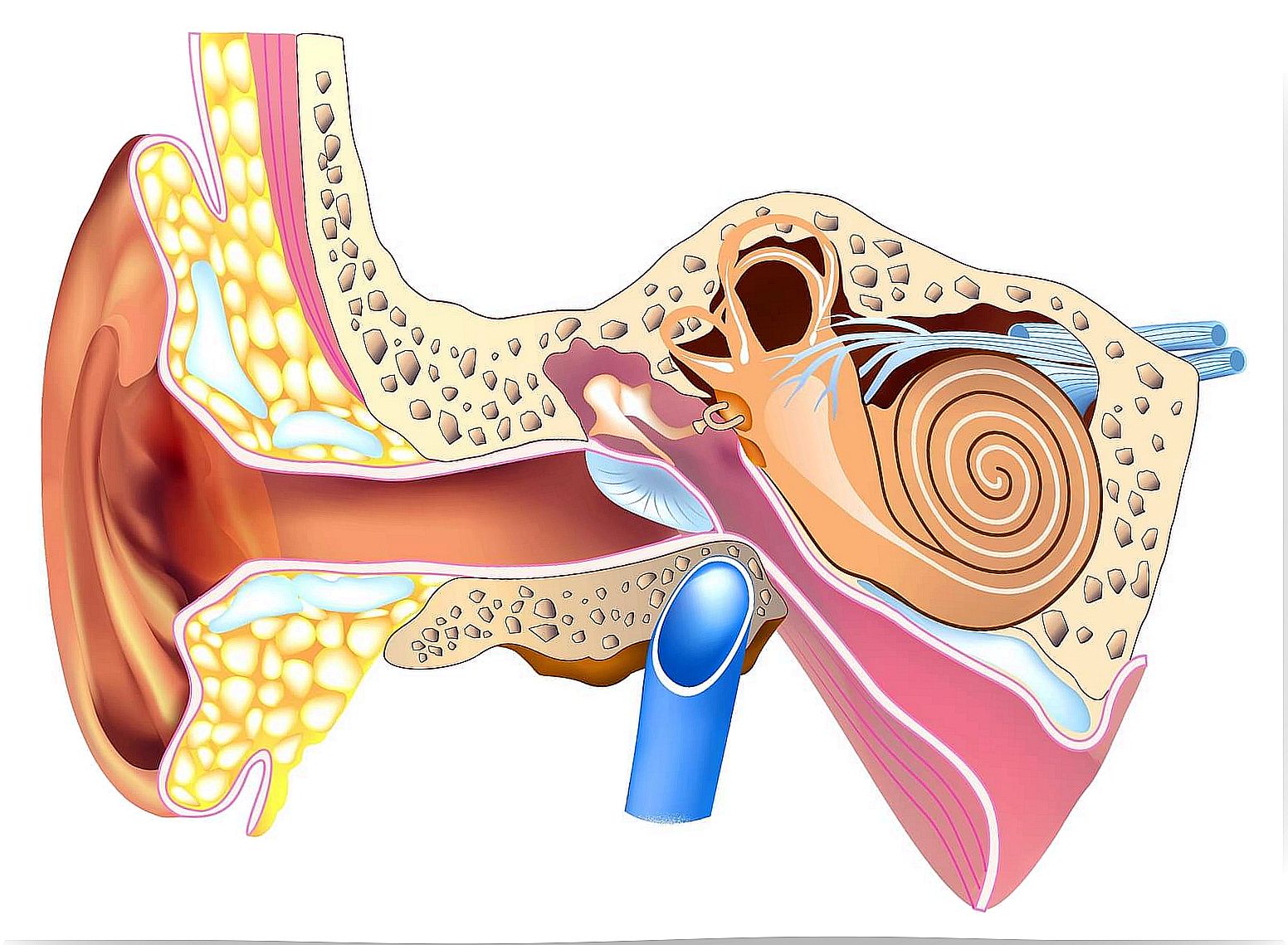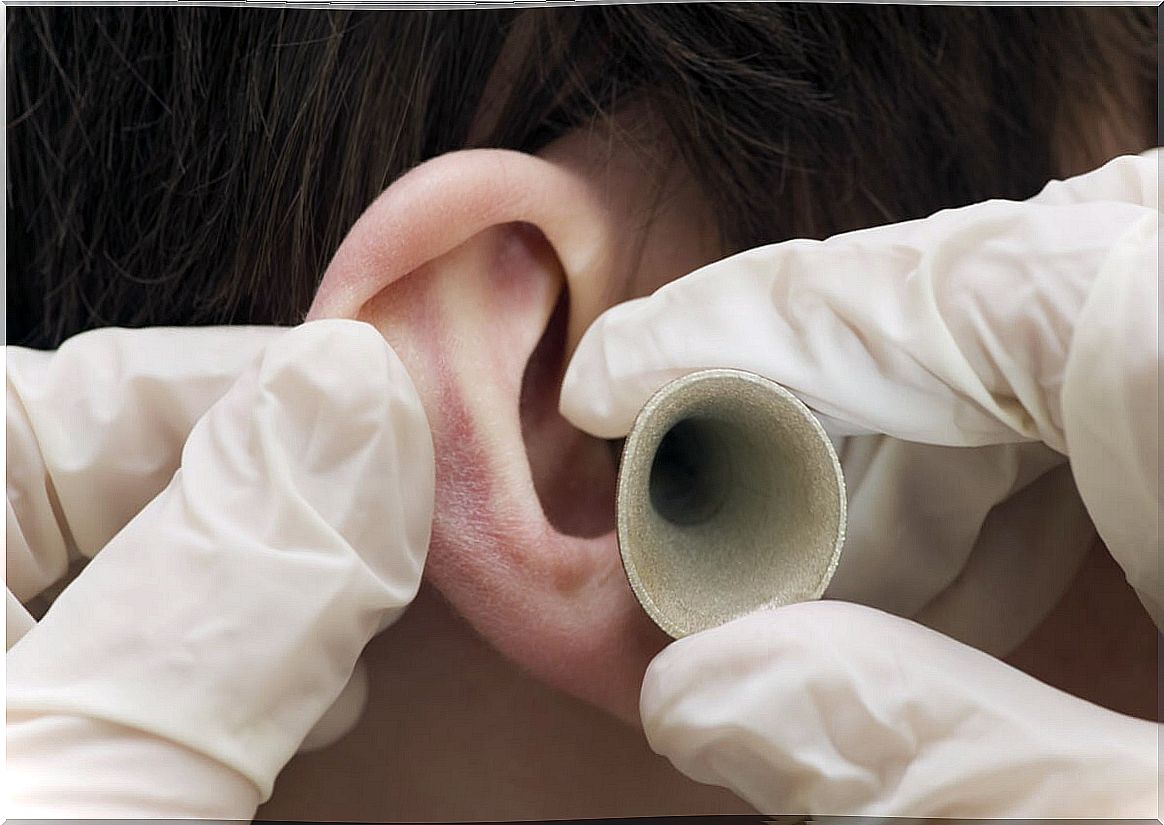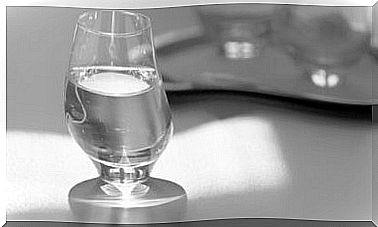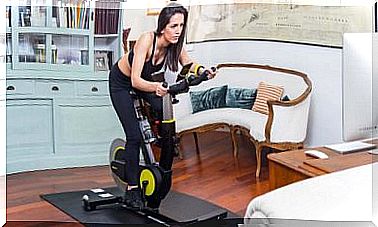Otoscopy: Preparation And Possible Complications
Otoscopy is one of the most widely used tests, both in otorhinolaryngology and in a primary care consultation. It is used to examine the outermost portion of the ear, from the ear to the tympanic membrane.
This is very useful, because ear pathologies, such as infections, are very common in the general population. The same goes for wax plugs or even eardrum perforations.
The advantage of otoscopy is that it is a quick, simple, and safe test. Therefore, in this article we explain how it is done, what its types are and what it can be used for.
What is an otoscopy?
Otoscopy, as we have pointed out in the introduction, is a procedure that allows the external ear and tympanic membrane to be studied. This term derives from the Greek otos which means ‘ear’ and skopein which means ‘examine’.
According to an article in Comprehensive Pediatrics, otoscopy also helps to assess the middle ear. This is because, although it does not enter said cavity, it allows us to see if there are secretions inside. It also checks if the eardrum is perforated and, if so, how is the mucosa of the middle ear.
An instrument called an otoscope is used to perform an otoscopy . It is a device that has a thickness of 2 centimeters and a disposable hollow head. The heads can be of different diameters to better adapt them to each patient.
The otoscope head has a clear lens that allows you to view the inside of the ear. In addition, it has its own light to illuminate the ear canal. The truth is that, today, there are different ways.
However, all of them have that structure more or less similar. An otoscopy may also use a microscope or endoscope. They are devices with which a more defined image is obtained.

Why is this test done?
Otoscopy is a simple and painless test that is very useful. As we noted, any doctor can perform this test. However, it is more common for it to take place in an otolaryngology, pediatric or primary care consultation.
In pediatrics it is very common, because children tend to suffer from pathologies in relation to the ear. For example, infections are common.
As explained by the specialists at Centro Auditivo Valencia, one of the main indications is to assess the integrity of the eardrum. The perforation can appear for many reasons, such as the use of ear buds or a tumor.
In addition, otoscopy allows us to observe the presence of wax plugs, which are very frequent. Earplugs can cause hearing loss. There are people who have a certain predisposition to suffer them. This is because they generate earwax faster than they remove it.
Any other alteration that affects the outer ear can be evaluated with otoscopy. For example, the presence of some injury or a foreign body, such as an insect. It is also used to detect tumors, such as cholesteatoma.
How an otoscopy is performed
To perform an otoscopy it is important to have spoken with the patient before and to know their symptoms and possible discomforts. In addition, the ear and the entire area must be explored before starting the test itself.
When an infection is suspected, the ideal is to begin the otoscopy with the healthy ear. It is usually the one that does not hurt or produce other symptoms. In this way, the infection is prevented from passing from one ear to another by the examination itself.
On the other hand, in these cases it is also recommended to change the disposable head of the otoscope. We must bear in mind that most external ear infections cause pain. That is why you have to try to be careful when doing it.
In adults, the ear must be pulled back and up. Once this gesture is made, the otoscope is inserted and the interior is observed. In children, on the other hand, you have to pull back and down.
Look at the entire external auditory canal. It is important to check for lesions, wax plugs, if the color of the mucosa is normal. Then you have to study the tympanic membrane; if it is integrated, how is its color and transparency.
What types are there?
Otoscopy, at present, can be performed in different ways, depending on the patient and what you want to study. According to a study by the Spanish Association of Pediatrics, two main types of otoscopy are distinguished: pediatric and pneumatic.
Pediatric otoscopy is indicated for children. Infants have a shorter ear canal than adults. In addition, its diameter is also smaller, so the device must be smaller.
On the other hand, the angulation of the tympanic membrane is different from that of the adult. For this reason, when otoscopy is performed, the pinna should be pulled down and back. If we remember, in adults it was upwards.
Pneumatic otoscopy is used to evaluate the tympanic membrane and the middle ear. It has a device that fits into the ear canal to make it airtight. In this way, the pressure in the ear varies.
This way, it is possible to check if the tympanic membrane is moving or not, to see if there is any perforation or injury in it. It is a somewhat more unpleasant test than the normal one, but it is very useful.
Types of otoscope
Currently there are multiple types of otoscopes that allow the test to be increasingly accurate and simple to perform. The most widely used is the electric otoscope. It is the one that allows to illuminate the interior of the external auditory canal thanks to a halogen light source.
This light has an intensity higher than a normal bulb, so the observation is very sharp. It is connected to a socket.
On the other hand, we find the otomicroscope. It is a type of device that enables a more specific otoscopy. It is usually used for cases in which surgery is required or to study tumors.
The video otoscope is a normal otoscope that has a small video camera at the end. In this way, the image can be displayed simultaneously on one screen to enlarge it.

Possible complications of otoscopy
Otoscopy is a simple test that is usually uncomplicated. However, there are certain risks that are important to be aware of.
One of them is the fact that the infection is transferred from one ear to another by using the same otoscope head. For this reason, as we mentioned at the beginning, it is recommended to start the examination in the healthy ear or to change the head.
It is also possible that, after the otoscopy, there will be some discomfort or pain in the area. In very rare cases, a perforation of the eardrum may even occur. However, it is very rare.
Otoscopy is a quick and easy test
Otoscopy is a test that is very often performed in medicine. The patient does not require any type of prior preparation. In addition, it takes little time and does not usually cause complications.
We must remember that otoscopy is used to diagnose many auditory pathologies. For example, it allows you to see tympanic perforations, wax plugs, infections, and foreign bodies.









